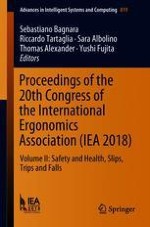2019 | OriginalPaper | Buchkapitel
Effective Factors on the Occurrence of Falling from Height Accidents in Construction Projects by Using DEMATEL Method
verfasst von : Reza Gholamnia, Mobin Ebrahimian, Saeid Bahramzadeh Gendeshmin, Reza Saeedi, Sina Firooznia
Erschienen in: Proceedings of the 20th Congress of the International Ergonomics Association (IEA 2018)
Aktivieren Sie unsere intelligente Suche, um passende Fachinhalte oder Patente zu finden.
Wählen Sie Textabschnitte aus um mit Künstlicher Intelligenz passenden Patente zu finden. powered by
Markieren Sie Textabschnitte, um KI-gestützt weitere passende Inhalte zu finden. powered by
